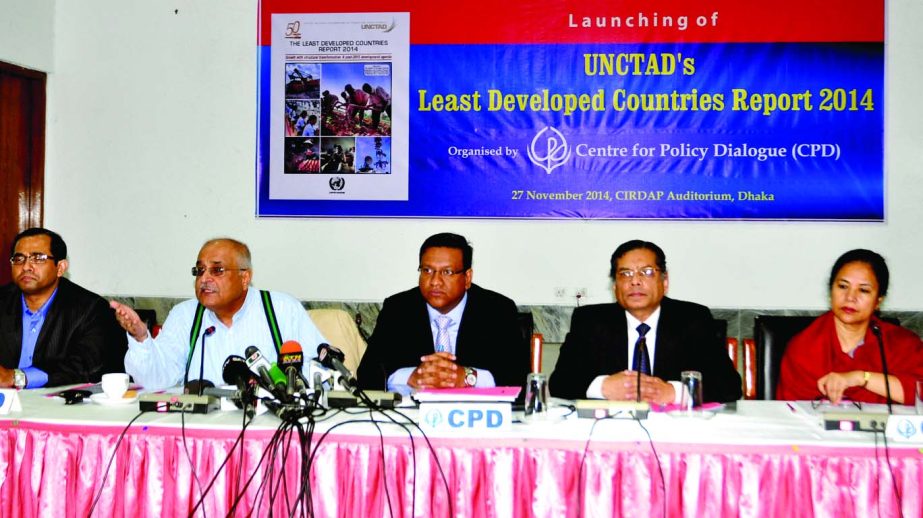
UNB, Dhaka :The Centre for Policy Dialogue has issued a renewed call for Bangladesh to address long-term structural issues that continue to afflict its economy, instead of concentrating all its efforts towards attaining middle-income status based on per capita income.”If Bangladesh concentrates on turning into a middle-income country, increasing per capita income but not changing its economic structures, our problems will remain,” said CPD distinguished fellow Dr Debapriya Bhattacharya on Thursday, while addressing a press briefing to launch the Least Development Countries Report 2014, at the Cirdap auditorium.Since 2006, CPD has been organising the local launch of the LDC reports prepared by the United Nations Conference on Trade and Development, or UNCTAD.Rather than pinning all its hopes on the GDP per capita figure, Debapriya said Bangladesh would be better served in its aim to graduate out of the LDC club by focusing on two non-traditional criteria – the development of human assets index, and the removing economic vulnerability index.It will be difficult for Bangladesh to ditch its LDC status by increasing per capita income due to its large population, the eminent economist said.He also aired his doubts over Bangladesh’s realistic chances of attaining middle-income status by 2021 – a stated aim of the government. “If we’re ambitious, another 10 years is needed for this.”The Economic and Social Council of the United Nations (Ecosoc) reviews the list of LDCs every three years on the basis of three criteria-per capita income, human assets and economic vulnerability. A country will normally qualify for graduation from LDC status if it has met the graduation thresholds of at least two out of the three criteria. The next official review will take place in 2015. Dr Bhattacharya said though Bangladesh has increased per capita income significantly, and performed well in terms of GDP growth, remittance, food security and disaster management, the country still faces three major problems.The first problem stems from the low proportion of employment in the manufacturing sector – just 14 percent (compared to 54 percent in agriculture). The statistics indicate the skill-level and competence of the workforce is very low.Then comes the country’s disproportionate dependence on one industry – textiles or RMG – for its export earnings that leads to further economic vulnerabilities.Finally there is the persistently low level of investment in the economy, that leads on to low wages and incomes.Presenting the LDC Report 2014 subtitled ‘Growth with Structural Transformation: A Post-2015 Development Agenda’, CPD research fellow Towfiqul Islam Khan said the per capita income of Bangladesh is now $1190, against $1242 required for graduation from LDC status.In economic vulnerability Index (EVI), the position of Bangladesh was 32.4 in 2012, but maximum 32 point is needed to meet the graduation threshold, he added.In Human Assets Index, the value of Bangladesh stood at 54.7 in 2012, but minimum 66 is needed for graduation threshold, he noted.The report said LDCs faced a challenged external environmental in 2013 with slow and uneven recovery of the global economy. Yet they were able to achieve an average real GDP growth rate of 5.6 percent in 2013 -higher than the 4.6 percent of other developing countries -(ODCs). Bangladesh’s GDP growth was 5.8 percent in the year.

